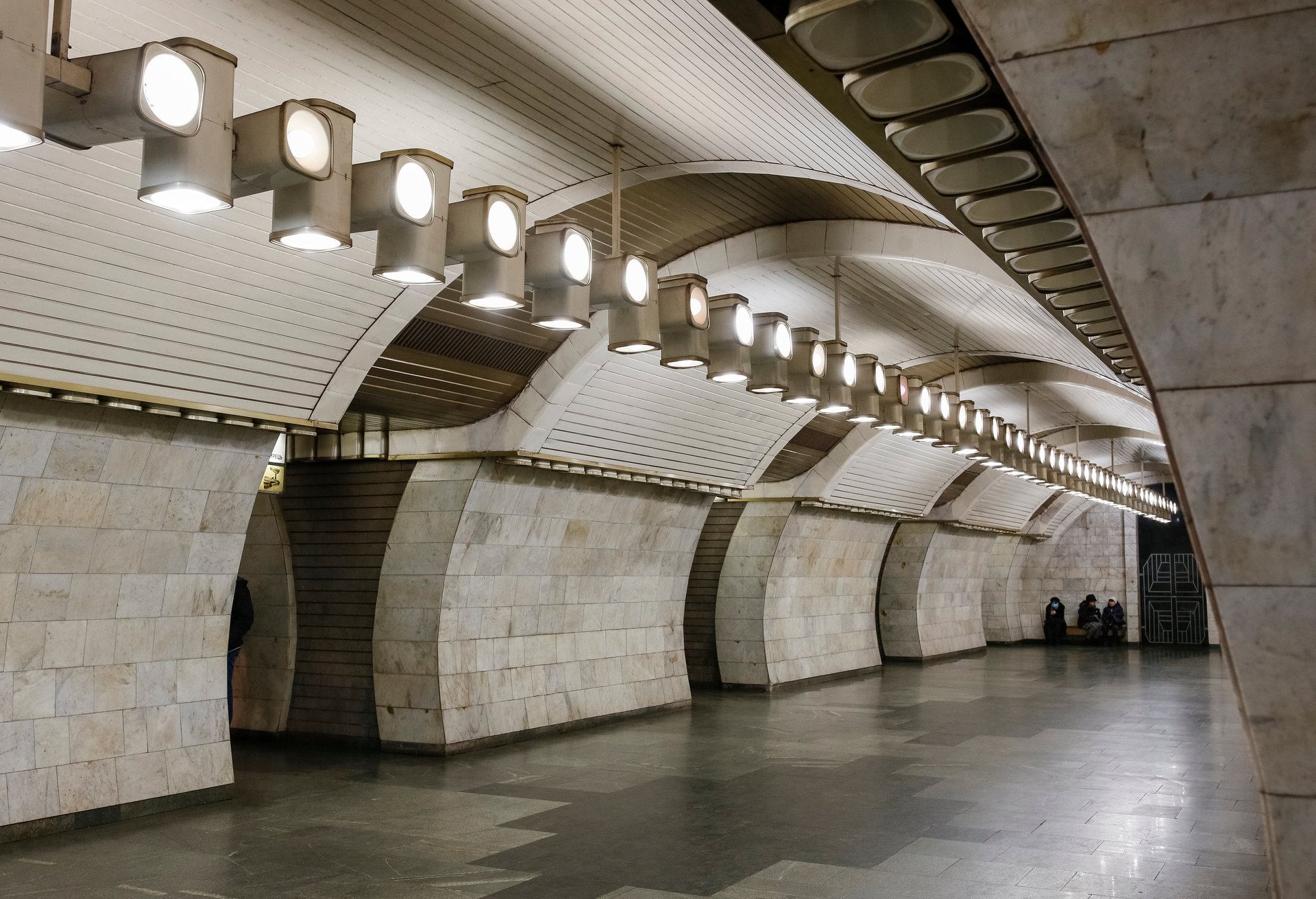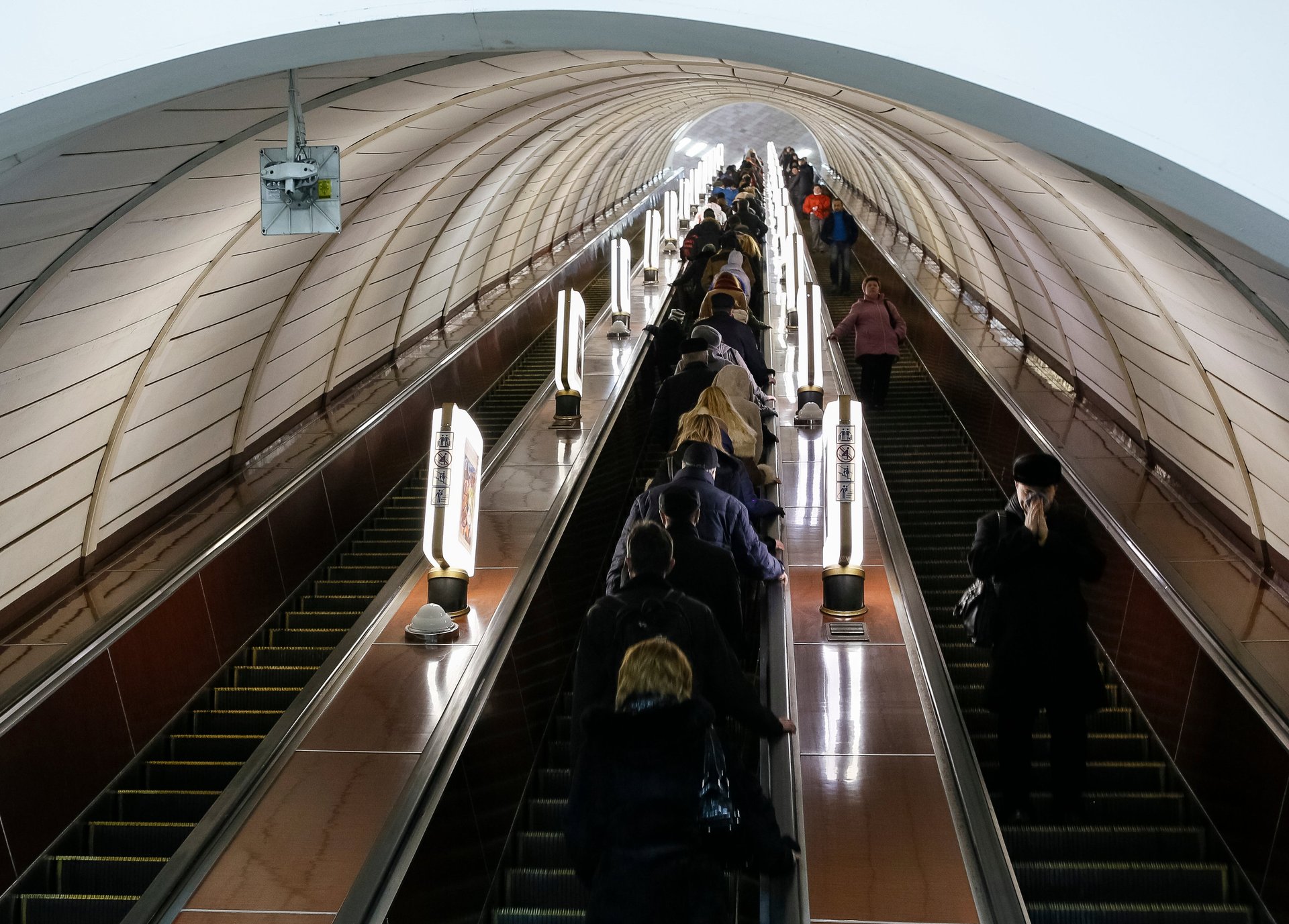Kyiv’s subway stations were built for an invasion
As Russian forces launched several missiles at the Ukrainian capital of Kyiv the night of Feb. 23, thousands of citizens hunkered down in subway stations. On Thursday Feb. 24, Kyiv mayor Vitali Klitschko imposed a curfew and halted public transit so that subway stations could be used as round-the-clock shelters.
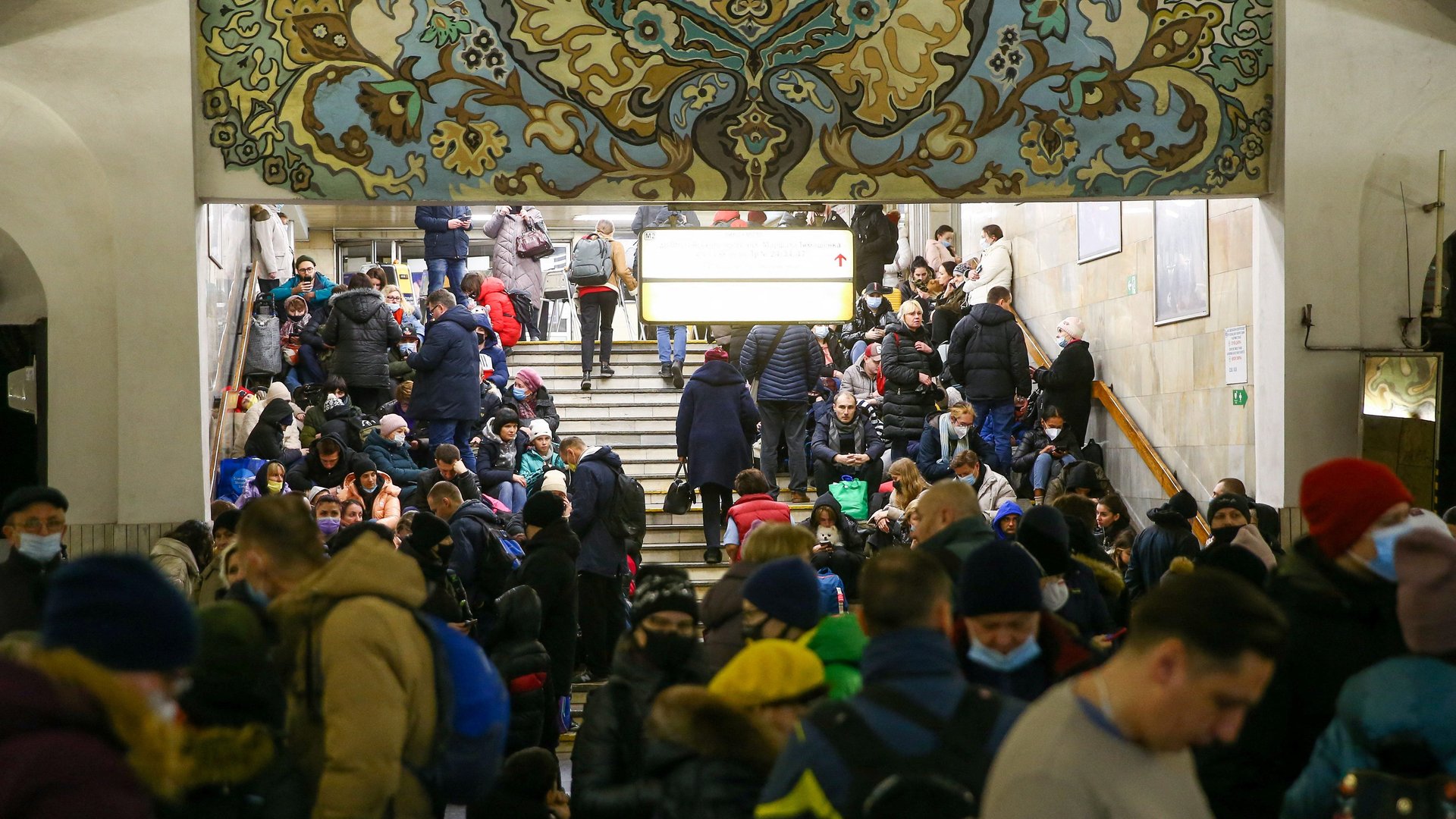

As Russian forces launched several missiles at the Ukrainian capital of Kyiv the night of Feb. 23, thousands of citizens hunkered down in subway stations. On Thursday Feb. 24, Kyiv mayor Vitali Klitschko imposed a curfew and halted public transit so that subway stations could be used as round-the-clock shelters.
As it turns out, Kiyv’s metro system was built to serve this very purpose. Completed in the 1960s when Ukraine was part of the Soviet Union, it includes stations built deep underground, designed to double as bomb shelters in the event of an enemy attack. Kyiv’s Arsenalna station is considered to be the deepest in the world, located 346 ft (105.5 m) below ground.
Air raid sirens could be heard throughout the city in the early hours of Thursday, a warning for people to seek shelter. In addition to the subways, people are hiding out in the basements, places of worship, and other designated bomb shelters.
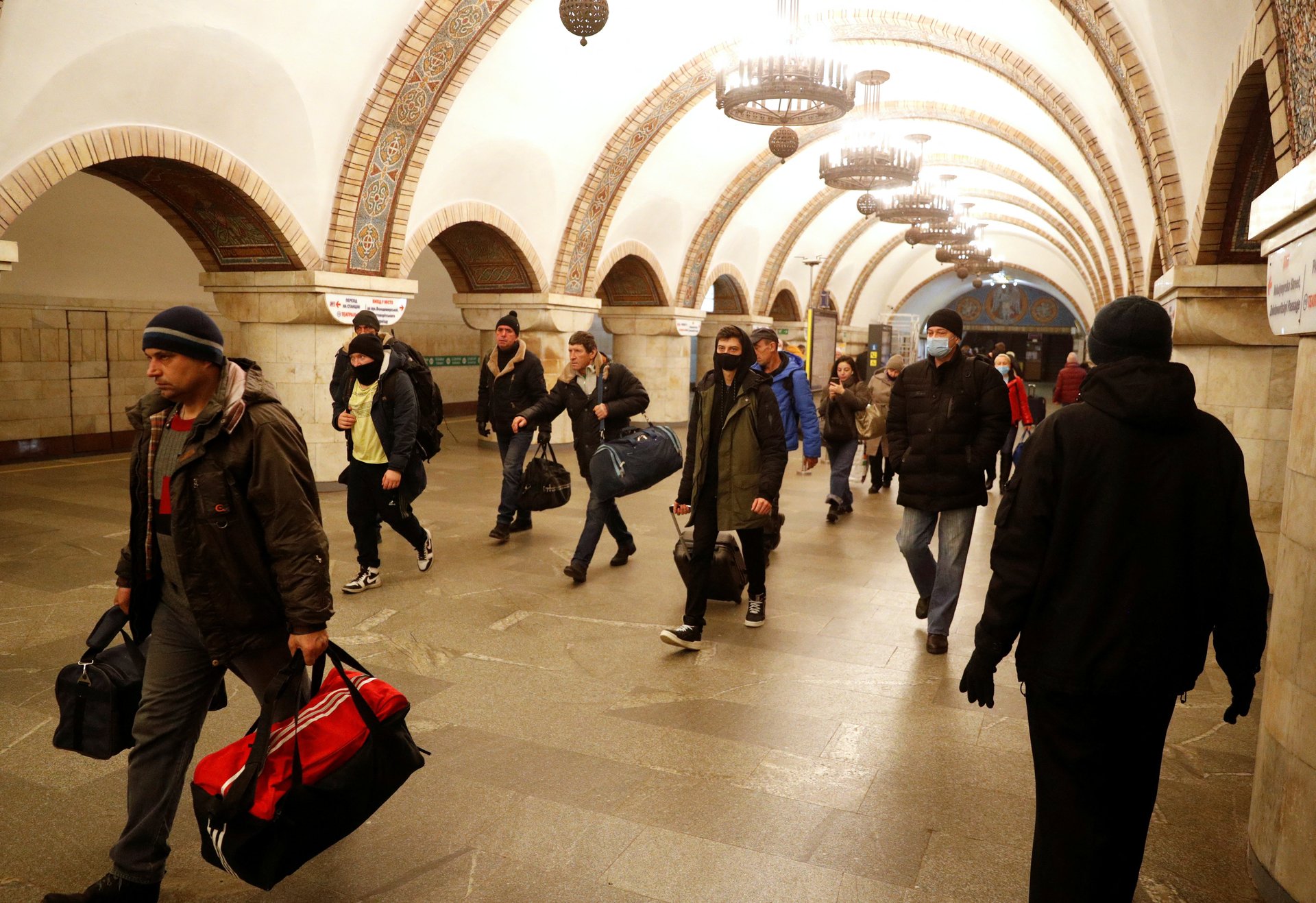
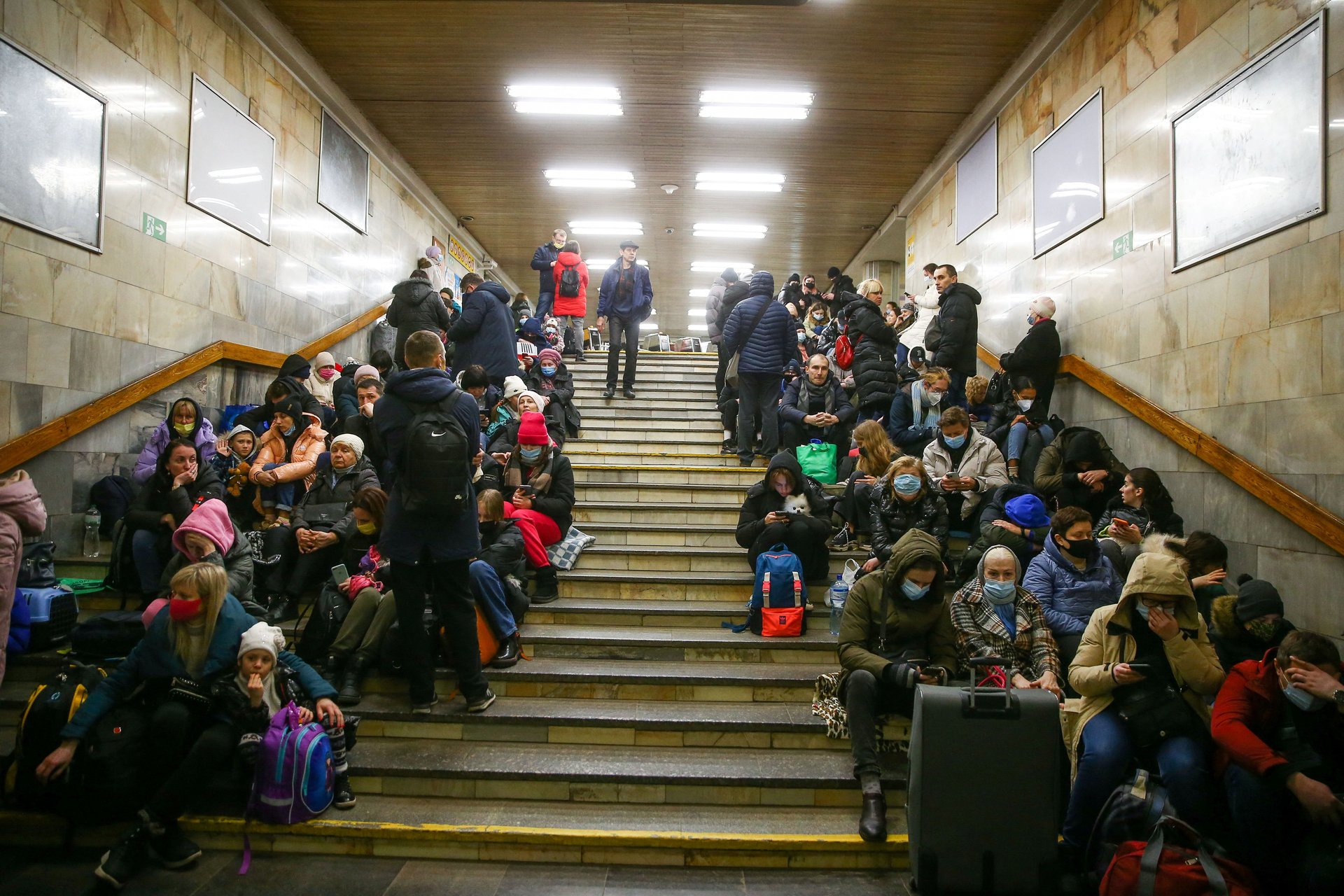
First conceived in 1884 when Ukraine was part of the Russian Empire, the Kyiv subway system is a feat of engineering and architecture. Its stations are decorated with marble archways, beautiful mosaics, and decorative chandeliers. But many stations, especially those in the center of the city, were also built to serve a tactical purpose during the Cold War, when nuclear warfare was an ever-present danger.
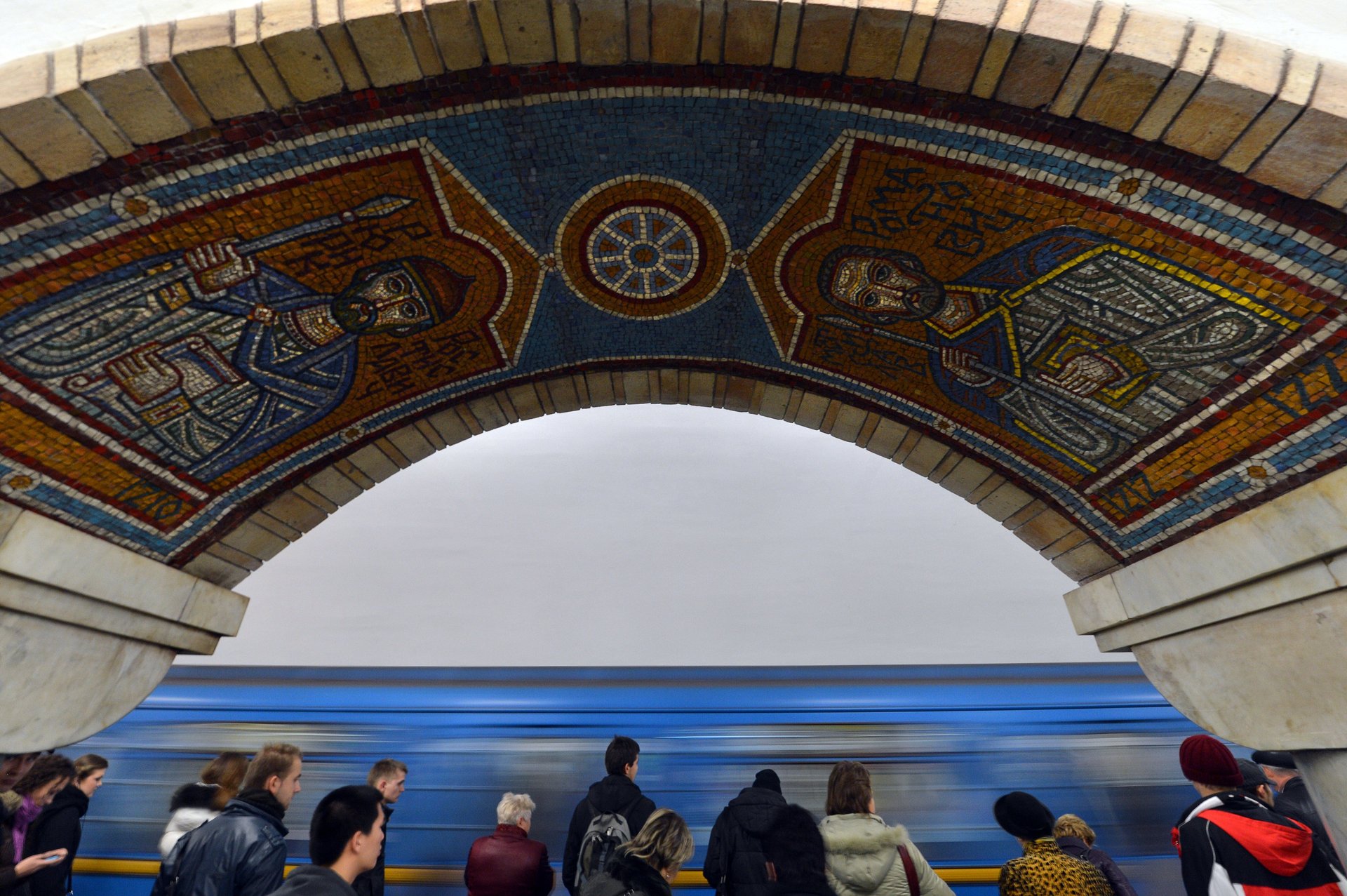
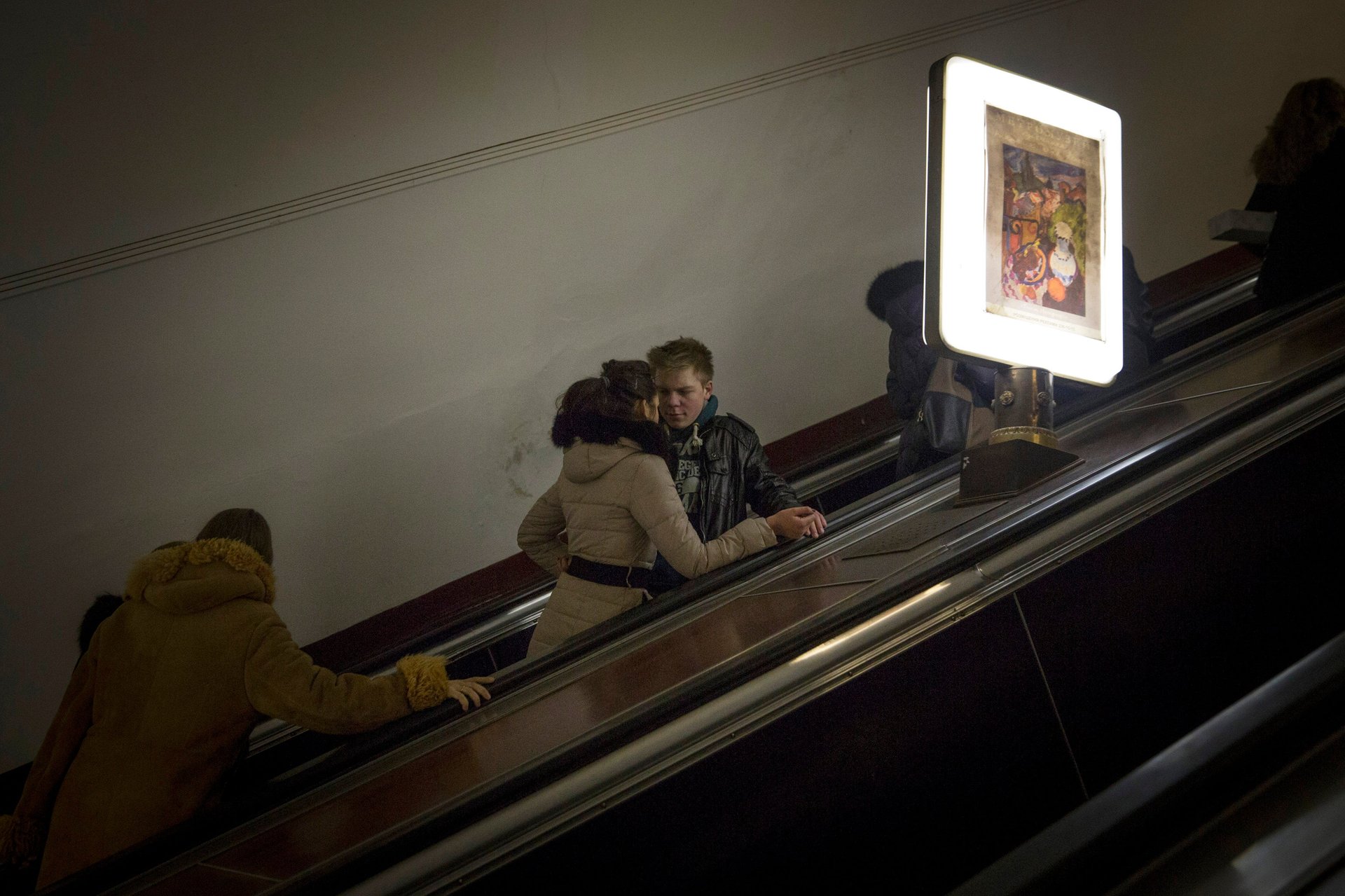
In April, amidst escalating threats from Russia at Ukraine’s eastern border, Kyiv’s city government released a map of nearly 3,000 designated bomb shelters. It included 47 of the city’s 52 subway stations.
